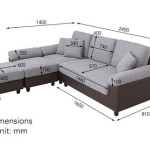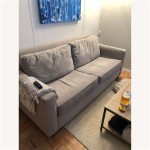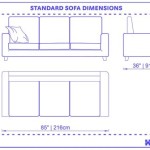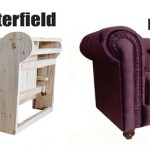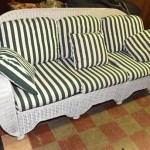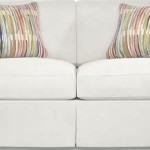Understanding Sofa Cushion Foam: A Comprehensive Guide
Sofa cushion foam is a critical element in determining the comfort, support, and longevity of a sofa. The selection of appropriate foam types significantly impacts the overall seating experience. This article delves into the various aspects of sofa cushion foam, exploring different types, their properties, factors influencing selection, and maintenance tips to ensure optimal performance.
The primary function of sofa cushion foam is to provide a comfortable and supportive surface for sitting. It acts as a shock absorber, distributing weight evenly and reducing pressure points. The foam also contributes to the aesthetic appearance of the sofa, maintaining its shape and preventing sagging. Choosing the right type of foam is essential for ensuring long-term comfort and satisfaction.
Types of Sofa Cushion Foam
Numerous types of foam are available for sofa cushions, each with unique characteristics and suitability for different applications. Understanding these differences is crucial for making an informed decision.
Polyurethane Foam: This is one of the most common and versatile types of foam used in sofa cushions. Polyurethane foam comes in various densities and firmness levels, making it suitable for a wide range of seating applications. Lower-density polyurethane foam is often used for back cushions or armrests, while higher-density foam is preferred for seat cushions that require more support. Polyurethane foam is generally affordable and readily available.
High-Density Polyurethane Foam: As the name suggests, this type of polyurethane foam boasts a higher density than standard polyurethane foam. This increased density translates to greater support, durability, and resistance to compression. High-density polyurethane foam is an excellent choice for seat cushions in heavily used sofas, as it can withstand significant wear and tear while maintaining its shape and comfort. It is also less likely to break down or sag over time compared to lower-density options.
Memory Foam: Also known as viscoelastic foam, memory foam is renowned for its ability to conform to the body's shape, providing personalized comfort and pressure relief. Memory foam cushions mold to the contours of the user, distributing weight evenly and reducing pressure points. This characteristic makes memory foam a popular choice for individuals seeking enhanced comfort and support, especially those with back pain or joint issues. Memory foam typically is layered on top of a firmer base foam to provide both support and the conforming feel. However, all-memory foam cushions can sometimes retain heat.
Latex Foam: Latex foam is a natural or synthetic rubber foam known for its resilience, breathability, and durability. Natural latex foam is derived from the sap of rubber trees, while synthetic latex foam is manufactured from petrochemicals. Both types offer excellent support and comfort, but natural latex foam is often preferred for its eco-friendliness and hypoallergenic properties. Latex foam is naturally resistant to dust mites and mold, making it a good choice for individuals with allergies. It also tends to be more breathable than polyurethane foam, which helps to regulate temperature and prevent overheating. Latex foam is often more expensive than polyurethane foam.
Down and Feather Filling: While not technically foam, down and feather fillings are a traditional option for sofa cushions. Down and feather cushions offer a plush, luxurious feel, but they require regular fluffing to maintain their shape and prevent clumping. They also provide less support than foam cushions and may not be suitable for individuals who prefer a firmer seating surface. Down and feather fillings can be quite expensive and may trigger allergies in sensitive individuals. They are often used in combination with foam cores to provide a balance of comfort and support.
Fiberfill: Fiberfill, often made from polyester or other synthetic materials, is a common alternative to foam for back cushions and decorative pillows. Fiberfill is lightweight, affordable, and easy to clean. However, it provides less support than foam and tends to flatten out over time, requiring frequent replacement. Fiberfill is often used in conjunction with foam cores to provide a softer, more plush feel to sofa cushions.
Factors Influencing Sofa Cushion Foam Selection
Choosing the right sofa cushion foam involves considering several factors related to comfort, durability, budget, and intended use. Careful evaluation of these factors is essential for making an informed decision.
Density: Foam density is a critical factor that directly impacts the support, durability, and longevity of the cushion. Higher-density foams are generally more durable and resistant to compression, making them ideal for seat cushions that experience frequent use. Lower-density foams may be suitable for back cushions or armrests where less support is required. Density is typically measured in pounds per cubic foot (PCF). A higher PCF indicates a denser, more durable foam.
Firmness: Firmness refers to the degree of resistance the foam offers when compressed. Firmness is subjective and depends on individual preferences. Some individuals prefer a firm seating surface that provides ample support, while others prefer a softer, more plush feel. Firmness is typically measured using a scale called Indentation Force Deflection (IFD) or Indentation Load Deflection (ILD). A higher IFD/ILD value indicates a firmer foam.
Durability: The expected lifespan of the sofa is a crucial consideration when selecting cushion foam. For sofas intended for heavy use, such as those in family rooms or living rooms, opting for high-density, durable foam is essential. This will ensure that the cushions maintain their shape and support over time, preventing sagging and premature wear. The type of fabric covering the cushions also impacts durability; more robust fabrics can better withstand wear and tear.
Comfort Preference: Personal comfort preferences play a significant role in foam selection. Individuals who prioritize pressure relief and contouring may prefer memory foam, while those who prefer a more resilient and breathable option may opt for latex foam. It's highly recommended to test different types of foam before making a purchase to determine the most comfortable option. Visiting furniture stores and trying out different sofas can provide valuable insights into personal comfort preferences.
Budget: The budget allocated for sofa cushions is another important factor. Different types of foam vary significantly in price. Polyurethane foam is generally the most affordable option, while latex foam and memory foam tend to be more expensive. It's essential to balance the desired level of comfort and durability with the available budget to make a practical and cost-effective decision.
Allergies: Individuals with allergies should consider hypoallergenic foam options, such as natural latex foam or synthetic foams treated with antimicrobial agents. These foams are less likely to harbor dust mites and mold, reducing the risk of allergic reactions. Ensuring the fabric covering the cushions is also hypoallergenic can further minimize allergy risks.
Maintaining Sofa Cushion Foam
Proper maintenance is essential for extending the lifespan and preserving the comfort of sofa cushion foam. Regular cleaning, fluffing, and rotation can help prevent sagging, maintain shape, and minimize the buildup of dirt and allergens.
Regular Cleaning: Frequent vacuuming of sofa cushions is crucial for removing dust, dirt, and debris that can accumulate over time. Using a soft brush attachment can help prevent damage to the fabric. For spills and stains, it's essential to address them promptly using appropriate cleaning solutions. Always test the cleaning solution on an inconspicuous area of the cushion before applying it to the entire surface. Professional cleaning services are recommended for deep cleaning and stain removal.
Fluffing and Rotating: Regularly fluffing sofa cushions helps to maintain their shape and prevent clumping of the foam or filling. Rotating cushions regularly ensures even wear and tear, prolonging their lifespan. Switching the positions of seat cushions and back cushions can help distribute the wear more evenly. This is especially important for cushions that are frequently used in specific areas.
Sunlight Protection: Prolonged exposure to direct sunlight can cause foam to degrade and fade. It's advisable to position sofas away from direct sunlight or use window coverings to protect the cushions. UV-resistant sprays can also be applied to the fabric to help prevent fading and damage.
Professional Cleaning: Schedule professional cleaning for sofa cushions at least once a year to remove deep-seated dirt and allergens that regular vacuuming cannot reach. Professional cleaners have specialized equipment and cleaning solutions that can effectively clean and sanitize the cushions without damaging the fabric or foam. Deep cleaning can significantly improve the overall cleanliness and hygiene of the sofa.
Proper Storage: When storing sofa cushions, ensure they are clean and dry to prevent mold and mildew growth. Store them in a cool, dry place away from direct sunlight and extreme temperatures. Using breathable storage bags can help protect the cushions from dust and pests while allowing air circulation.
By understanding the different types of sofa cushion foam, considering the factors that influence selection, and implementing proper maintenance practices, consumers can make informed decisions that maximize comfort, durability, and satisfaction with their furniture investments.

Replacement Seats And Cushions Foam

Couch Cushion Foam Solutions

Replacement Foam Sofa Cushions Super

Sit Better With Replacement Foam Sofa Cushions Foamite

Types Of Upholstery Foam Google Search Cushions On Sofa Cushion Couch

4 Secrets To Finding Upholstery Foam A Erfly House

Thinking About Sofa Cushion Foam Replacement Wefixanysofa Com

Foam Replacement For Sofa Cushions Plumbs

Cushions Options The Leather Sofa Company

Down Vs Foam Sofa Cushions Circle Furniture

